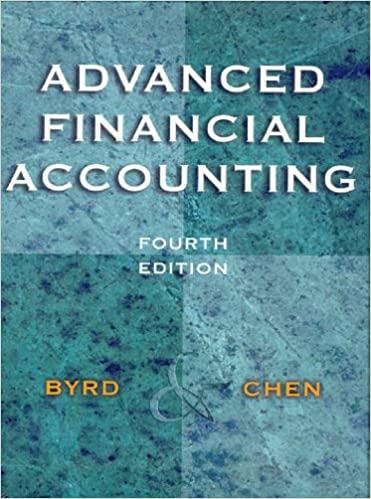Question
Analyzing Inventories Using LIFO Inventory Footnote The footnote below is from the 2014 10 -K report of Whole Foods Market, Inc., a Texas-based retail grocery
Analyzing Inventories Using LIFO Inventory Footnote The footnote below is from the 2014 10 -K report of Whole Foods Market, Inc., a Texas-based retail grocery chain.
Inventories The Company values inventories at the lower of cost or market. Cost was determined using the dollar value retail last-in, first-out ("LIFO") method for approximately 93.5 % and 92.8 % of inventories in fiscal years 2014 and 2013, respectively. Under the LIFO method, the cost assigned to items sold is based on the cost of the most recent items purchased. As a result, the costs of the first items purchased remain in inventory and are used to value ending inventory. The excess of estimated current costs over LIFO carrying value, or LIFO reserve, was approximately $54 million and $47 million at September 28, 2014 and September 29, 2013, respectively. Costs for remaining inventories are determined by the first-in, first-out method. Cost before the LIFO adjustment is principally determined using the item cost method, which is calculated by counting each item in inventory, assigning costs to each of these items based on the actual purchase cost (net of vendor allowances) of each item and recording the actual cost of items sold.
Whole Foods operates the world's largest chain of natural and organic food stores. In 2014, Whole Foods reported sales revenue of $13,988 million and cost of goods sold of $8,755 million. The following information was extracted from the company's 2014 and 2013 balance sheets:
| ($ millions) | 2014 | 2013 | |||
|---|---|---|---|---|---|
| Merchandise inventories | $399 | $352 | |||
a. Calculate the amount of inventories purchased by Whole Foods in 2014. $Answer million
b. What amount of gross profit would Whole Foods have reported if the FIFO method had been used to value all inventories? $Answer million
c. Calculate the gross profit margin (GPM) as reported and assuming that the FIFO method had been used to value all inventories.
Round to the nearest percentage (i.e., 0.453 = 45 %) Answer%
Step by Step Solution
There are 3 Steps involved in it
Step: 1

Get Instant Access to Expert-Tailored Solutions
See step-by-step solutions with expert insights and AI powered tools for academic success
Step: 2

Step: 3

Ace Your Homework with AI
Get the answers you need in no time with our AI-driven, step-by-step assistance
Get Started


